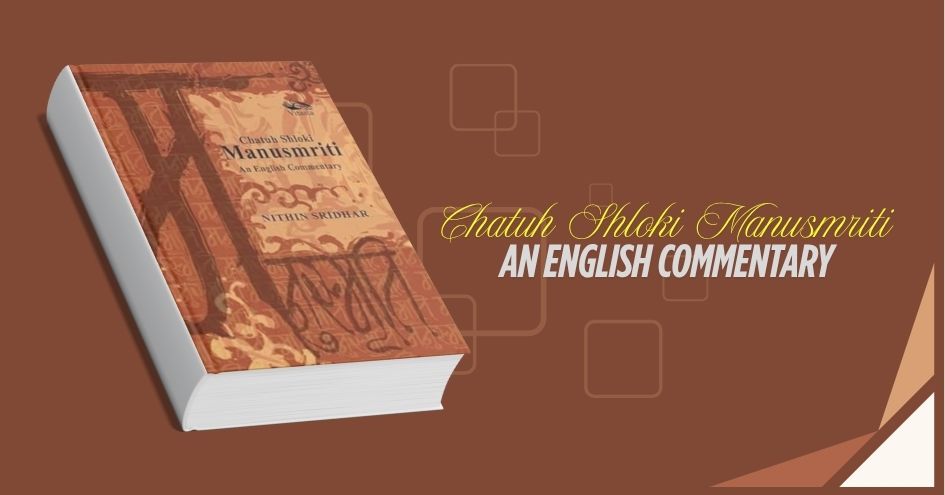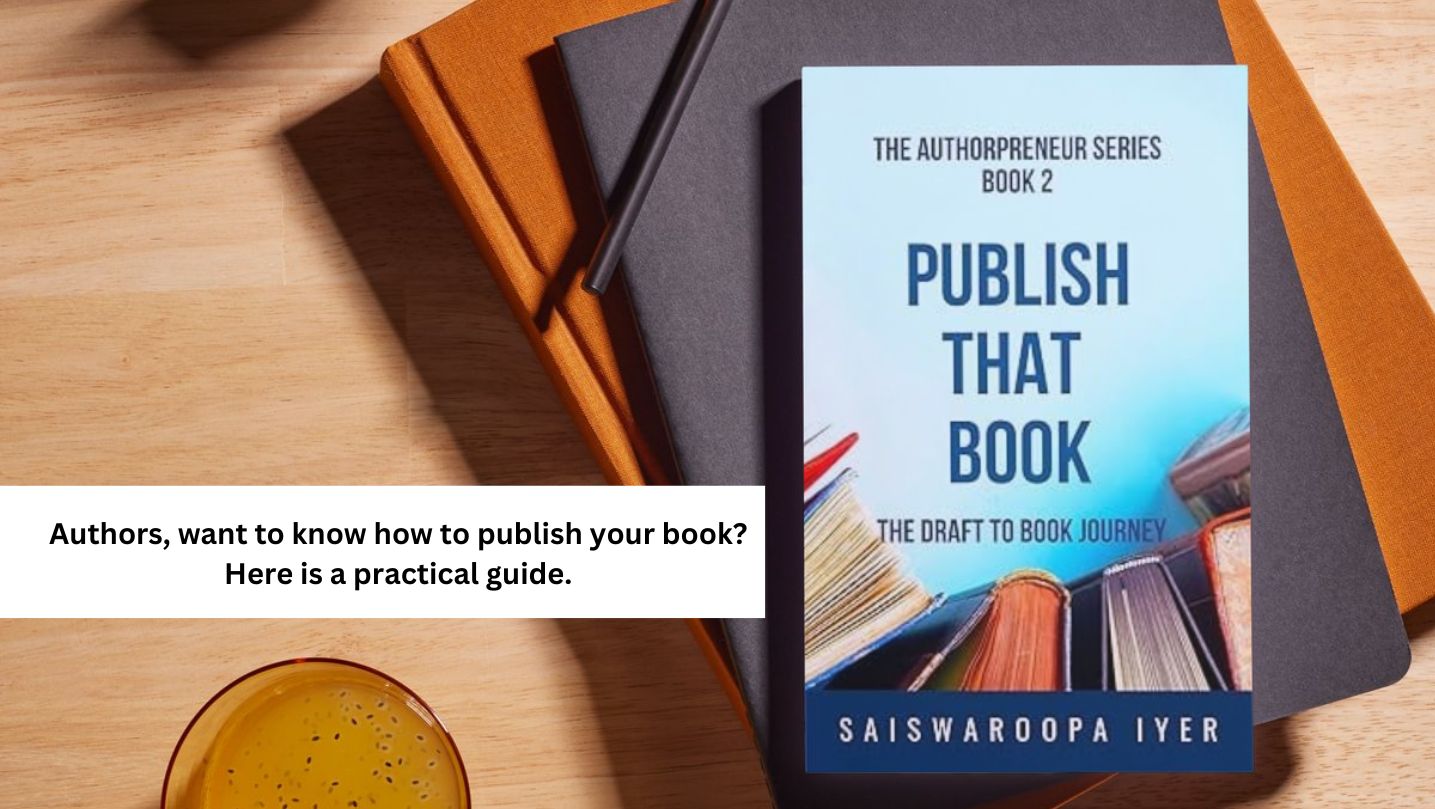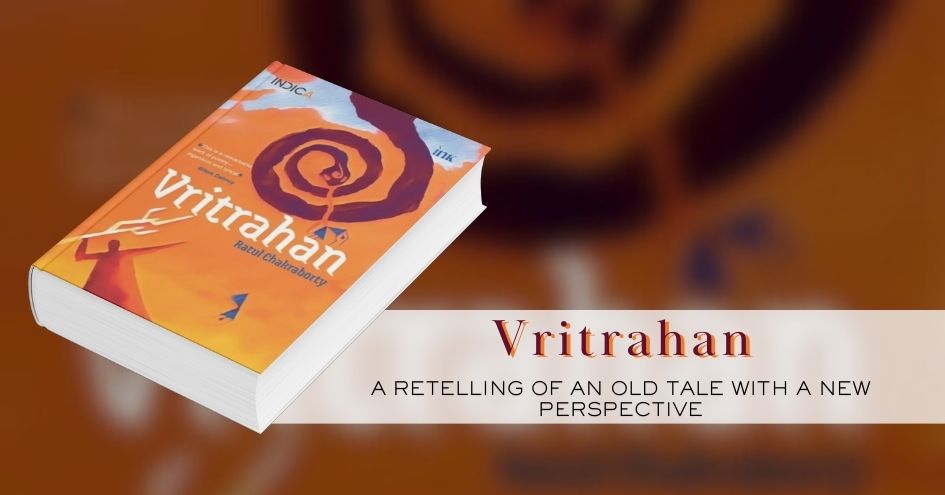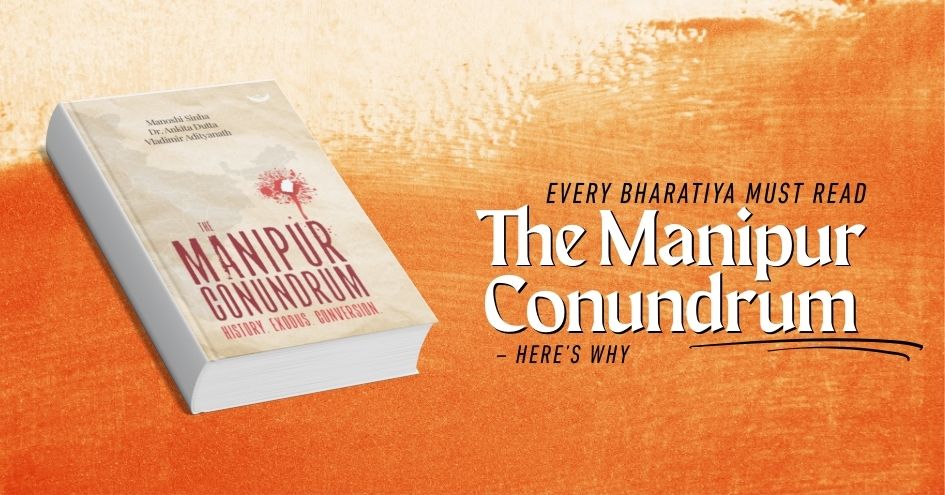Chatuh Shloki Manusmriti: An English Commentary – a scholarly work that decodes an essential text on Dharma
The Manusmriti is a book that is in discussion most often. Unfortunately, it comes in the news for the wrong reasons. Critics rail at the book, calling it casteist, anti-women, promoting Brahminical patriarchy, etc., etc. It is amusing that most people who rant about the Manusmriti have never even read it.
Their knowledge of the Manusmriti comes from reading selected analyses by writers from the left. There are hardly any critics who have actually read the original text. It is crucial to bring out the right perspective of the Manusmriti with proper analysis and interpretation. And that is what author and academic Nithin Sridhar has done.
About the Author
Nithin Sridhar is a well-known scholar and author who is one of the leading lights of the Indic narrative. He is among those who have dedicated their lives to the Indic cause to ensure people know the reality of the Sanatana faith and our vibrant culture. With a vast repertoire of books, Nithin Sridhar has played a key role in setting the narrative and spreading knowledge about Indic subjects.
The Director of the Indica Centre for Moksha Studies, Nithin Sridhar, is the author of six books that include Menstruation across Cultures, Samanya Dharma, and Isopanishad. Nithin Sridhar has now come out with his latest work – Chatuh Shloki Manusmriti: An English Commentary, published by Vitasta Publishing.
The Book
It is important that the Manusmriti be analysed with a commentary relevant to our times. Such a commentary would help dispel the numerous myths about this work, which is a part of the Sanatana faith. Nithin Sridhar's book is an academic work written painstakingly. It is a book to which he has devoted a lot of time and effort, and the result is there for readers to see.
A lot of research has gone into coming out with this book. The author has studied the Manusmriti and numerous commentaries about the sacred book Manu wrote. There is a bibliography of 17 pages with a list of all the books and articles referred to while writing the book. Every fact in the book comes with detailed explanations in the form of endnotes.
The endnotes in this book are extensive; there are 478 of them running to 131 pages. This shows what extensive research and work has gone into writing this book. No wonder this book has also won appreciation from scholars and general readers. Revered Swamijis, Sanskrit professors, and eminent scholars, including the late Dr. Bibek Debroy, have recommended this book for its scholarly exposition.
To Nithin Sridhar's credit, this book has gotten the attention and appreciation of none other than the erudite Hon'ble Finance Minister of India, Smt. Nirmala Sitharaman.
The Book Structure
The book is divided into two sections. The first section offers an introduction to the Manusmriti. This is important for lay readers who don't know much about this work and want first to understand the basics. The section has three chapters that talk of the authorship of the Manusmriti, the importance of Dharmashastra in our faith, and has clear pointers to help readers decode Dharmashastras.
In Section 2, the author provides a translation of the first four verses with his detailed commentary. The author offers a clear explanation of how it is a part of tradition to offer a translation of the opening verses of important texts.
As mentioned earlier, the book ends with an extensive bibliography and footnotes. The excellent structure of the book ensures it is a good read and perfectly presented as an academic book.
The Contents
The focus of this book is an analysis of the first four verses of the Manusmriti in detail. With a word-by-word translation, the author talks about the purpose and relevance of the verses. Importantly, there are cross-references to various other texts, including smritis, Puranas, Upanishads, etc.
The author, through his book, has done a very important task – that of clarifying various misconceptions related to the Manusmriti. The book talks about the importance of Dharma and its transformative role. The ancient wisdom of this smriti has been brought out for today’s people so that modern readers can learn more about this text that has sadly been dubbed as controversial. The author has ensured the answer to what constitutes Dharma has been brought out well.
The understanding of varna is a key aspect of this book since Manusmriti has been labelled as a casteist book by critics who haven't bothered to understand it. The biases about the text from so many years and the uncalled-for criticisms have been dealt with in a systematic way by the author.
Don't be under the impression that since Sec 2 covers only four verses, the book is not complete. It is comprehensive, offering depth into the text and an insight into the principles of Dharma that this work defines. The relevance of the text has been brought out well by the author. It is truly a valuable guide for Dharma in today's world.
Keeping in mind Indian Knowledge Systems that is being offered as a field of study, this book becomes all the more important. IKS aims to present the wisdom of our ancient texts to the world. Students studying IKS should read this book so Nithin Sridhar’s commentary helps them decode this important ancient text that is so much misunderstood.
Conclusion
Whether you are an academic who wants to study the Manusmriti or a student who wants to get different perspectives of this ancient text, this book will meet your needs. Nithin Sridhar's book is not only meant for academics but is also suited for lay readers. Anyone who wants to know more about the Manusmriti can pick up this book and read it.
Even though it is an academic work, the writing and presentation style ensures that general readers aren't overwhelmed. The narrative is very clear and brings out all the facts in an orderly manner. It is almost like attending a class by an expert teacher and learning a subject. This makes the book suitable for all types of readers. Of course, the academic nature of the book ensures that scholars will benefit more from it.
This is a book that MUST be available in all libraries, especially public libraries. I hope the government of India and other governments procure copies of this book and place it in libraries nationwide. Universities and colleges must include this book so students can access this important academic work.
 Deepak M R is a professional writer and author, who has previously worked in academics, training, and consulting. He is the author of the novel ‘Abhimanyu – the warrior prince’ (Bloomsbury, 2021). He is also a contributing author in the anthology Unsung Valour (Bloomsbury, 2020) and a KDP e-book ‘Mahabharata Tales: Justice for Draupadi and other stories’. He is an avid fan of Hindi film music.
Deepak M R is a professional writer and author, who has previously worked in academics, training, and consulting. He is the author of the novel ‘Abhimanyu – the warrior prince’ (Bloomsbury, 2021). He is also a contributing author in the anthology Unsung Valour (Bloomsbury, 2020) and a KDP e-book ‘Mahabharata Tales: Justice for Draupadi and other stories’. He is an avid fan of Hindi film music.

 Deepak M R is a professional writer and author, who has previously worked in academics, training, and consulting. He is the author of the novel ‘Abhimanyu – the warrior prince’ (Bloomsbury, 2021). He is also a contributing author in the anthology Unsung Valour (Bloomsbury, 2020) and a KDP e-book ‘Mahabharata Tales: Justice for Draupadi and other stories’. He is an avid fan of Hindi film music.
Deepak M R is a professional writer and author, who has previously worked in academics, training, and consulting. He is the author of the novel ‘Abhimanyu – the warrior prince’ (Bloomsbury, 2021). He is also a contributing author in the anthology Unsung Valour (Bloomsbury, 2020) and a KDP e-book ‘Mahabharata Tales: Justice for Draupadi and other stories’. He is an avid fan of Hindi film music.


